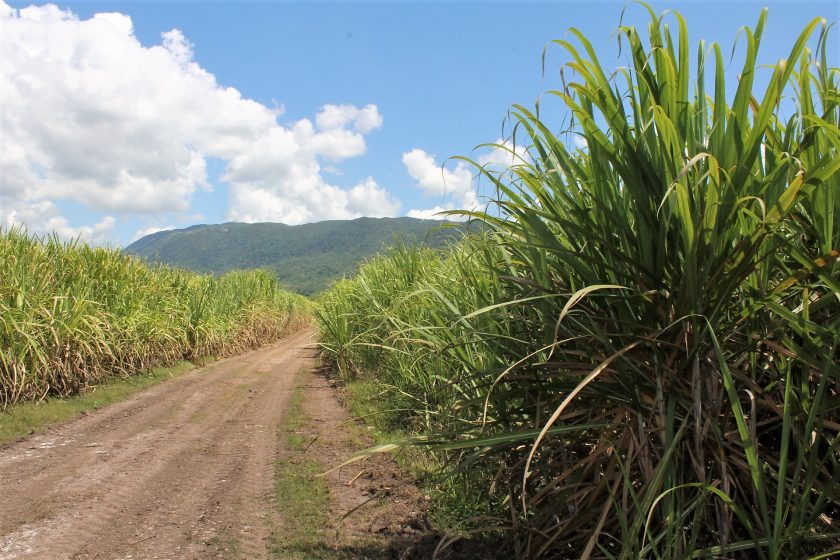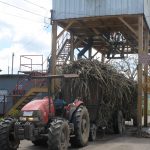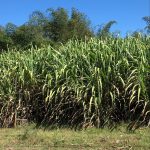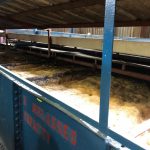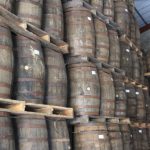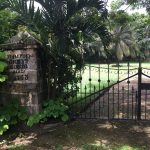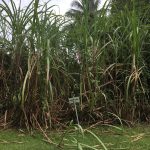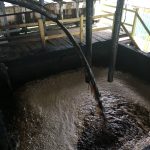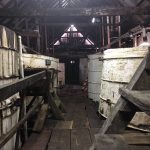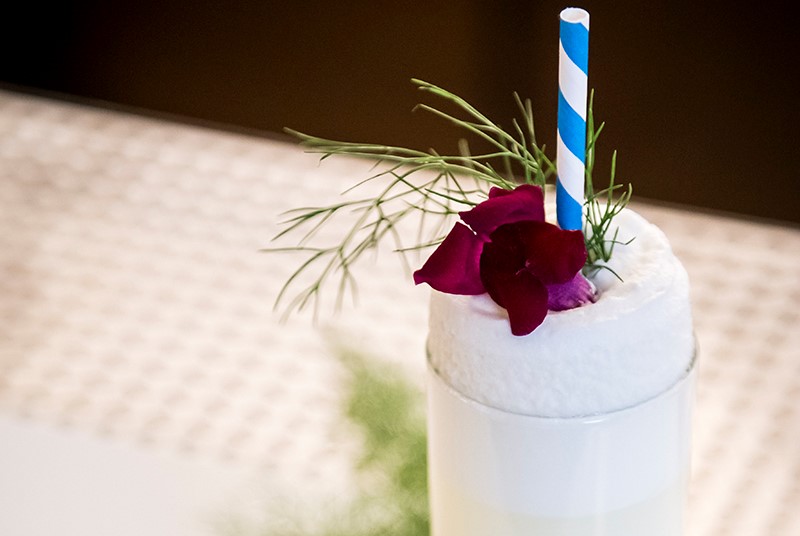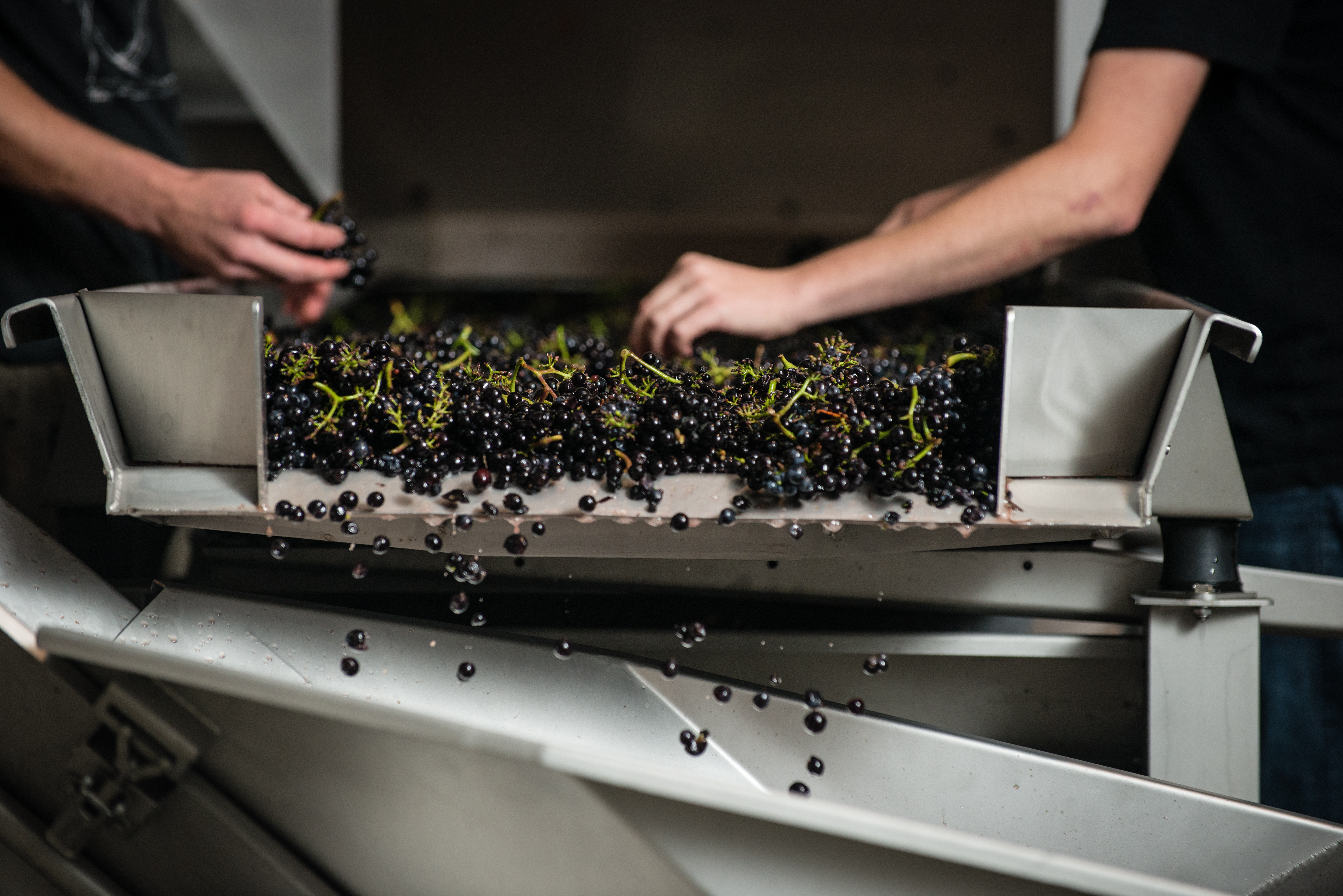When we talk about RUM (or RHUM, or RON), it’s generally accepted that there are three broad categories to consider, delineated by the colonial power that once dominated the place where the liquor was produced: French styles of Rhum, Spanish styles of Ron, and British styles of Rum. Within those three categories, however, further deep distinctions should be made. Not all French Rhum is Rhum Agricole; not all Spanish Ron is aged using a Solera system.
British Rums feature two legendary and wildly unique styles: heavy, toasty Demerara rum from Guyana, and funky, high-ester Jamaican pot still rum. Both have been specifically called for in recipes dating back to the earliest cocktail writer himself, Jerry Thomas. Both are critical for classic Tiki rum blends due to their unique characteristics.
Yet both are vanishing from their respective producing regions. Where once there were around 300 plantation distillers in Guyana producing rum from Demerara River molasses, there is now just one distiller left (Demerara Distillers Limited, who produce our lovely El Dorado and Lemon Hart lines).
In Jamaica, while rum production remains strong, nearly all the spirits being distilled are no longer made in the historic, pot-still method which made the island’s style famous; today, the vast majority is a blend of mostly industrial, column-distilled rum with a small amount of traditional Jamaican funk for flavor.
It’s heartbreaking! Thankfully, at Skurnik Wines & Spirits, we focus on bringing you spirits that reflect people, place, and culture. As of May 2018, we now work with two of the three remaining traditional Jamaican pot-still rum estates: Worthy Park and Hampden. And they are divine.
But let’s look first at the history of rum in Jamaica a little and unpack how we got here – and what makes traditional pot-still rum special.
HOT AS HELL, AND AS WICKED AS THE DEVIL
In 1655, the British Royal Navy attacked and conquered the Spanish settlement of Jamaica, creating a central trading post for their growing Caribbean interests. They immediately built a small town, Port Royal, which rapidly grew into the largest and wealthiest city in the West Indies, most of all a hub for contraband goods and otherwise illegal trade among merchants, privateers and notorious pirates. A visiting English clergyman famously referred to Port Royal as “the Sodom of the New World… the majority of its population consists of pirates, cutthroats, whores, and some of the vilest persons in the whole of the world.”
This was all made possible by the British government, who turned a blind eye to the pirates and their behavior in exchange for the buccaneers’ defacto defense of Jamaica. Gold looted from Spanish ships and settlements could safely be spent (and taxed) on the British island, but the Spaniards were loath to retaliate against a port full of heavily armed, dangerous and often drunken pirates and privateers. The city enjoyed a decades-long bender. In true Biblical style, however, this “Sodom of the New World” was struck by three powerful earthquakes in 1692 … and more than half of the city sank into the ocean. 90% of the city was destroyed in mere minutes. This catastrophe marked the end of the pirate reign; Jamaica was rebuilt by the British with more agricultural aims and a more formal system of security. Their day had ended, but the pirates certainly left behind a decadent taste for rum.
TRENCHTOWN ROCK
The British colonialists embraced this new, more spiritually-secure approach to the island’s economy, and discovered Jamaica was an ideal growing environment for sugarcane. An average temperature ranging from 73-78 deg. F and an annual rainfall over 60”, with rolling mountains that keep the farmland both cool and moist, meant that the crop flourished at unprecedented rates. By the mid-18th Century Jamaica had become the Caribbean’s largest sugar grower; by the turn of the 19th Century, Jamaica was the largest sugar grower in the world.
Perhaps you’ve read other articles on the history of RUM here, from Skurnik Wines & Spirits. Regardless, it’s important we reiterate a bit about the relationship of sugarcane production and the dawn of Caribbean rum, as explained in our earlier article.
You see, the process of refining sugarcane juice into sugar crystals was problematic. To refine sugar, one must first cure – by boiling – the freshly pressed cane juice. The first boil yields cane syrup; the second and third, molasses (the waste matter which drips down from between the sugar crystals as they separate). This waste is still made up of a lot of precious sugar (about 40%), and there is typically more molasses than sugar at the end of the process, but at first, there wasn’t enough use for raw molasses to demand a secondary market. Enter the still.
Resourceful sugarcane planters stumbled upon a way to turn a profit on all this molasses they’d previously been struggling to dispose of. Molasses can be fermented quite easily, and anything which can be fermented can be distilled. Kill-devil¸ also known as rumbullion – soon abbreviated simply to rum – accordingly became the secondary yield of Caribbean sugar plantations, and a popular one. Every plantation of note was also a minor distiller, and rum drifted about the islands like so many sailors (who diligently put themselves to work at consuming it, too).
If Jamaica was the world’s largest sugar grower, it stands to reason the island also produced a lot of rum. By the 1820s Jamaica was exporting as much rum to Europe as all of Britain’s other 14 colonies combined: over 140 million liters, an annual amount equivalent to Bacardi’s global output today. That’s an awful lot of rum coming from one tiny island.
Now, consider that the column still had not yet been invented. The only method of distilling all this fire water was to run all that molasses through rustic alembic pot stills twice, a slow and arduous process. But this old-school method of distillation tends to yield more distinctly flavorful spirits, and there is arguably none so potent and flavorful as Jamaican rum.
Jamaica became known especially for its remarkably assertive pot-stilled rums. Heavier in style, rum producers on the island also focused on longer fermentation times and proprietary or ambient yeasts unique to their individual estates on the island. These led to higher concentrations of esters: the chemical compounds which, at a low molecular weight, lend flavor and fragrance to acids and alcohols. This distinct “funky” style of powerful flavor became synonymous with Jamaican rum and contributed to the island’s rum popularity for centuries. But by the early 1900s, Jamaica began to slip down the same treacherous path that had brought the decline of so many other distinct producing regions: the rise of the sugar beet in Europe, consolidation of many plantation distillers into just a few larger commercial corporations, and most of all oversupply. After World War II, there was a massive surplus of rum throughout the Caribbean, and prices bottomed out. From 1901 to 1948 Jamaica went from 110 distillers to just 25; today there are just 6 in operation.
The vast majority of rum still produced in Jamaica is now sold as bulk rum, often used to bring flavor & character to innocuous column-distilled rums from around the world; most of the remaining Jamaican rum funnels into either Captain Morgan’s European releases, or into two major brands, J. Wray & Nephew and Appleton, which are primarily produced together using column stills, and are owned by Italian spirits conglomerate Campari.
But a few independent Jamaican rum producers are still purist pot-still estates. Because of their hard work and commitment to keeping tradition alive, Jamaica will soon be awarded a Geographical Indication (similar to a Denomination of Origin) for their rums, ensuring that any product labeled as Jamaican Rum is 100% distilled on the island, using molasses and at least a traditional pot-still component. It’s been a long time coming. Let’s dig into two of those three remaining estates now.
Notably, both these producers are what has been termed “Pure Single Rum”: rum sourced and distilled entirely at one estate, using historic pot still methods, with no additives or sugars introduced. The purist’s definition of Caribbean Rum, and a category marked by true character.
WORTHY PARK
Located in the parish of St. Catherine, Worthy Park is the 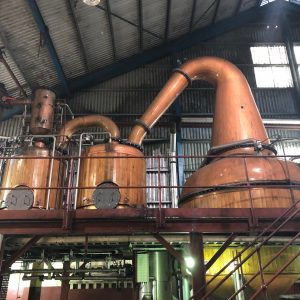 oldest (albeit, interrupted) distilling estate on the island. The estate was patented in 1670 and has been distilling since at least 1741. Since 1918, the Clark family has owned and operated the 10,000 acres which make up Worthy Park’s resources. Around 40% of that acreage is devoted to sugar cane. After the surplus of WWII, the Spirits Pool Association of Jamaica (including the Clark family) agreed to shut down distillation activities at several estates (including Worthy Park), and until 2004 the estate made no rum. Thankfully, the Clark family had revived the estate’s distillery and even purchased new equipment including a brand-new pot still from Scotland.
oldest (albeit, interrupted) distilling estate on the island. The estate was patented in 1670 and has been distilling since at least 1741. Since 1918, the Clark family has owned and operated the 10,000 acres which make up Worthy Park’s resources. Around 40% of that acreage is devoted to sugar cane. After the surplus of WWII, the Spirits Pool Association of Jamaica (including the Clark family) agreed to shut down distillation activities at several estates (including Worthy Park), and until 2004 the estate made no rum. Thankfully, the Clark family had revived the estate’s distillery and even purchased new equipment including a brand-new pot still from Scotland.
Sugar cane is still primarily cut by hand, although sometimes a combine harvester is employed. The cane is refined into sugar and molasses on the estate, in what has been described as the most efficient sugar facility in the entire Caribbean. Molasses is fermented using three distinct strains of yeast: a traditional dry distiller’s yeast, a proprietary strain from the estate, and a slow-ferment with spontaneous wild yeasts. Each of these different fermentations can be used separately to create different distilled marques with higher or lower esters and weight; but all distillation happens on the same massive, gleaming Forsyth pot still, capable of handling up to 8,000 liters a day.
Much of the estate’s rum is sold in bulk, to flavor that bland column cane distillate mentioned before. Much also finds its way to private bottlers. Though rum from Worthy Park has been available in the US market under private labels for a few years now, the estate has finally brought its family-own brand home to join the Skurnik stable: Rum-Bar. The brand is named for the traditional little rum bars, also called rum shops, which litter the rural parishes around Jamaica; each is typically decorated with paintings of the brand of rum which hails from the local parish community. Ranging from a relatively low-proof (but high-ester) 40% ABV silver, through a 4-year old Gold, a traditional white Overproof and even an aged Single Estate bottling (at 6-10 years), Rum-Bar is easily the most diverse and complete brand range to encompass the historic methods of traditional Jamaican rum production: full of flavor and funk, but mellow and approachable.
HAMPDEN ESTATE
By sharp contrast, the Hampden Estate is like an archaeological treasure: strong evidence of the history of Jamaican pot-stilled rums, and the last estate to produce intensely high-ester rums using the historic “dunder” method of fermentation. Located in the legendary rum parish of Trelawny, Hampden Estate dates back to 1753 and has been distilling pot stilled rum continuously since 1756. Though the estate has passed through the hands of many families in subsequent centuries, it has found a lasting champion in the Harris-Hussey family since 2009. Around 13,000 acres are devoted entirely to sugarcane, and the estate even had its own tiny port for shipments built just after World War I.
What makes Hampden most unique, though, is the dunder method. Spent molasses, from previous fermentation and distillation runs, are allowed to propagate bacteria in a massive “grave” before being added to the aptly-named “muck pit”: a deep berth of festering molasses which resides below the stilt-standing fermentation house. Over 80 open-air wooden fermenters (much like the tinas used in mezcal production) line the building, bubbling with aromas of balsamic vinegar, overripe raspberries, and moldy old socks. Openings in the floorboards expose the muck pit below. Small amounts of the muck are removed from the pit, thus dubbed “dunder”, and added to fresh molasses during fermentation (much like a sour mash process in bourbon… but waaaay more aggressive). A sliding scale of dunder is added to the molasses “wine” to gauge the level of esters in the final yield distillate. A small amount of fresh pressed sugar cane juice is typically added to the molasses as well, as it would commonly have been across the Caribbean in the centuries before sealed fermentation and sourced molasses all but ended the plantation estate distiller system.
Fermentation can range from one week to one month.
The rum is distilled using three historic pot stills, with a fourth on the way, all clocking in at around a 5,000-liter capacity. The water used to ferment and proof the rums is supplied by Hampden’s own spring water and rainwater collected on the estate; the Harris-Hussey family has also been moving the estate towards a zero-carbon footprint status for the past several years.
Hampden Estate’s rums range from 350 phenolic parts per million of esters to a whopping 1,600 (the highest level allowed by the Jamaican government, for export tax reasons). Like Worthy Park, the estate sells the vast majority of its powerful funky juice – literally and scientifically the most funky rum being made in the entire world – in bulk, again to flavor bland (mostly European-owned) column distilled rums from all over. In fact, Jamaica’s top-selling rum, Wray & Nephew Overproof White, today is a light column expression flavored with some of Hampden’s ester heft; whenever a cane distillate needs a little extra edge, people turn to Hampden high-ester for that missing dimension.
This cult-like status has also led to a fair amount of private bottlers sourcing Hampden estate. Our own Barrell Spirits featured Hampden juice for its first two Rum releases, and renowned rum producer Habitation Velier bottles both Worthy Park and Hampden private barrels; most well-known, the iconic Smith & Cross Navy Strength Rum is 100% Hampden Estate rum, sourced by a London-based private bottler after export. But Hampden Estate has done the world the kind favor of releasing their own high-ester Overproof White rum, aptly named Rum Fire, allowing us all to experience historic Jamaican pot stilled dunder rum in its truest form. Not for the faint of heart, but required for anyone who gives a damn about what Caribbean rum was like before the age of industrialization and consolidation made it uniform and, frankly, boring. If you like flavor, well – you’ll love Rum Fire.




